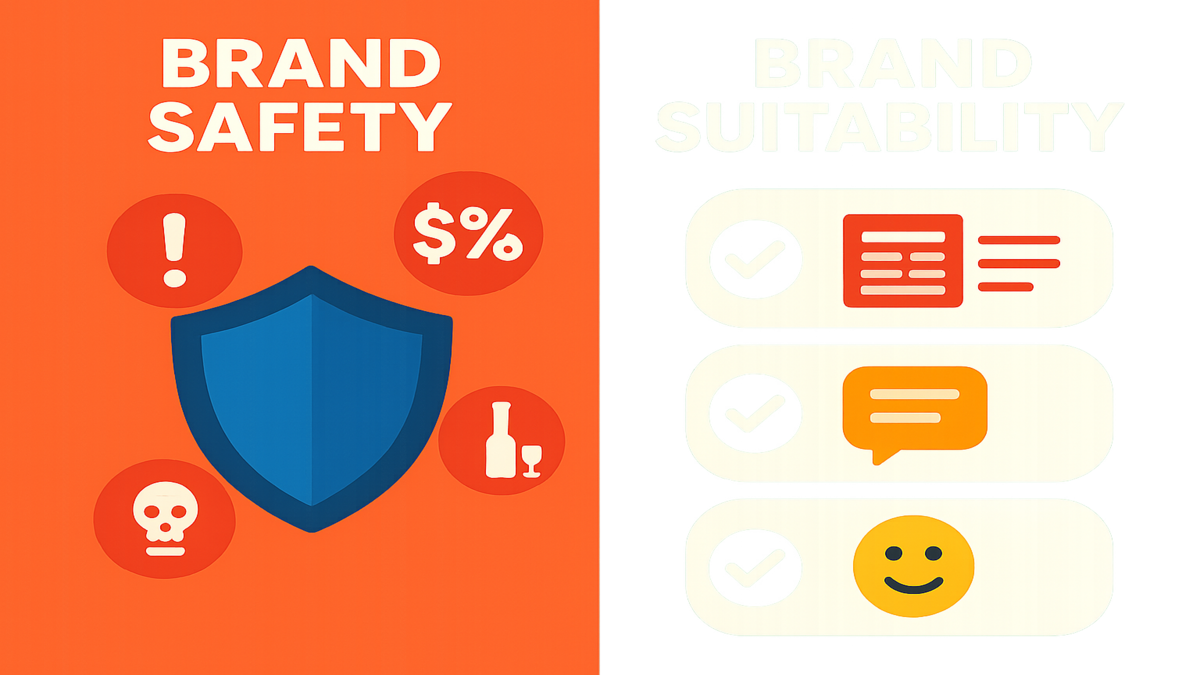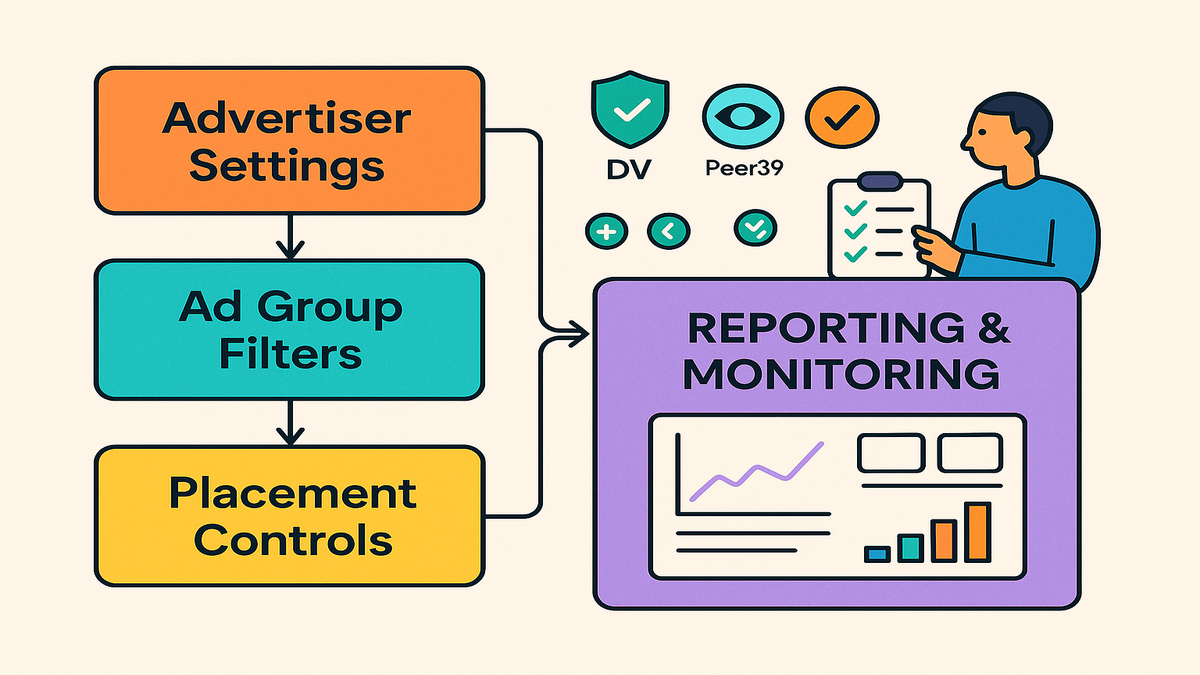
Mastering Brand Safety And Suitability In Adobe DSP Campaigns

Let’s play some quick corporate fear bingo. Picture this: You just ran a wild DSP campaign. Your numbers look great. You feel like you can’t lose. Then wham—someone sees a screenshot of your ad right next to some nasty news story. The post blows up online. And now your brand is blowing up… for all the wrong reasons.
If that gives you the urge to shut your laptop and disappear, trust me, you’re not alone. Over 80% of marketers say one bad brand safety screw-up crushed their trust—and their sales. One rogue ad can ruin months of hard work in a matter of hours.
But here’s the twist: DSP (Demand-Side Platform) brand suitability isn’t just about running from the weirdest corners of the internet. The magic comes from filters that fit your brand tight, hooking up third-party guardrails, and slicing through messy online content with laser reporting.
And get this—tools like Adobe DSP are rolling out open betas with all kinds of brand protection options. If you want to actually sleep at night (and run campaigns that don’t end in panic), now’s the time to jump in. Let’s break down the gears, filters, and numbers that put you—not internet chaos—in control.
[What’s this look like in the real world? Explore our hands-on DSP Services for smarter, safer campaigns.]
TL;DR
- Open beta: Tiny, detailed brand safety controls in Adobe DSP
- Works with top third-party safety (DoubleVerify, IAS, Peer39)
- Change filters by advertiser, campaign, or placement
- Pre-bid blocks and smart contextual checks—before your ad gets live
- Open beta brings more power, but you gotta test and tweak it yourself
- Sharp reports help you fix problems fast, stay ahead

Why Brand Suitability Matters
Beyond Scary Headlines
When marketers talk “brand safety”, they picture the worst: a family ad beside a livestream of a crime, or a kids’ cereal ad next to harsh headlines. That’s bad, sure. But honestly, most brand damage starts in the weird middle ground. Suitability is really about matching your ad’s world to your brand’s style—so folks trust you instead of rolling their eyes.
Think about a fun startup with goofy, cool ads. If their silly memes show up next to sad news or big exposes, it just feels wrong. Awkward. And that’s not just a mood killer. It eats away at your good reputation. Katy Clark, Brand Strategy boss at ContentGauge nails it: "Suitability takes you from avoiding mistakes to making your ads shine in the right setting."
Even small mismatches matter. A fancy brand running before some cheap gaming stream? Easy way to wreck your classy image in one click.
Quick Facts
- 87% of shoppers say where they see an ad changes how they feel about a brand (IAS, 2023)
- Almost 1 in 4 online campaigns still get flagged for not matching ad tone and content (Comscore, 2022)
So, your job isn’t just to scream "watch out!" at awful content. It’s to pick the best neighborhood for your ad. With new open beta features, you finally get the tools to play offense—not just run from disasters.
How Modern DSPs Protect
Pre-Bid Filtering
Old brand safety was like doing an autopsy. You’d check after the campaign, see what went wrong, then scramble to block and fix it. Yikes. Why wait for disaster? Pre-bid is the fix: filters and checks work in real-time, so risky sites and moments get dodged before your ad can show up.
That’s where modern DSP rocks. Platforms like Adobe hook up with big guns like DoubleVerify, Integral Ad Science (IAS), Peer39, and Comscore to give you:
- Fraud and bots blocked: No wasting cash on fake clicks or zombie eyeballs.
- Smart keyword and content blocks: You can stop just the bad stuff, not the whole site. Block junk content on legit pages too.
- Pick your own level: You decide how tight or loose to set rules—one size never fits all campaign goals.
Expert Tip: "Pre-bid’s a gamechanger. With DoubleVerify, you block issues before they pop up," says Laura Jung from MetaBright. “Marketers want to handle risk at the start, not after the fire.”
Brand Safety In Action
Say you’re pushing a new wellness product. With Adobe DSP, you block all adult and political content before your ads run. You can even ban certain words, like "scandal" or "recall"—every impression sticks to your playbook and avoids random headlines.
Deeper Control For Every Campaign
Not Just One Rule
Here’s the jump: Open beta means filters aren’t just all-or-nothing anymore. Now you can customize brand safety by account, campaign, and even a single ad or placement. The API makes these tweaks fast—not some hours-long grind.
Why care? Let’s say there’s a big retail brand running three campaigns: cool teen clothes, cozy home goods, and work gadgets. With deep controls, you can get strict for the teen stuff, stay medium-safe on couches, and try new things for gadgets in test zones.
People are catching on: 60% of big brands moved from lazy, one-size rules to sharp, campaign-by-campaign settings since 2022. (IAB)
Controls In Adobe DSP
- Advertiser Level: Set your main brand safety rules with 'brandSafetyTierInheritedSettingDetails.' Your biggest rules stick.
- Ad Group/Placement Level: Get picky with 'brandSafetyTierTarget.' Tweak rules for each campaign or ad as you wish.
- API Power: Batch update hundreds (or thousands) of placements fast. Stay safe and flexible without wasting time.
Clark from ContentGauge says, “It’s all about knowing your risk comfort. Map it by product, time, and place. The best controls let you avoid waste and keep every ad on point.”
Don’t Forget the Humans
Reports and Human Watchdogs
Sure, robots block lots of junk fast. But nothing beats a real person reviewing those weird ad results. DSPs kick back detailed safety and delivery reports—so you can spot odd placements, fix on the fly, and stay nimble.
What’s smart to do?
- Catch strange or off-brand spots (looking at you, random K-pop meme site)
- Update blocklists as things change online
- Tweak filters fast when you spot something odd
- Tell the DSP team what you see, especially in open beta features
Pro tip: “Don’t wait months—review reports every week,” says Paris Edson at JetGrowth. “The web never rests. Bots don’t either. Your guardrails need to change as fast as the content does.”
Beta Features And Fast Surprises
Open beta means you get new stuff—and some odd results—before it’s public. Algorithms or new reports might trip you up. So watch close, share feedback, and know you’ll steer this ship too.

Safety Math: The Real Cost
Safety Isn’t Free
Let’s not sugarcoat: Working with DoubleVerify or other top safety partners costs extra per campaign or impression. It adds up. But what’s it cost if your brand goes viral for the wrong reason? Forrester (2023) says 68% of marketers think even one brand safety disaster can wreck ROI for good. So, skipping brand tracking isn’t really a savings—it’s a gamble.
Think of safety tools as just like insurance—a little spend up front saves a massive headache later. You’ll waste less fixing messes or chasing down lost reputation.
Smart Moves
- Draw hard lines at the top: Ban the worst stuff (hate, violence, illegal junk) for your whole account.
- Fine-tune by campaign: Block harsh news for fun products, make custom rules for new places or audiences.
- Track what you’re paying for: Check if you’re using the right filters and get your money’s worth every month.
- Double check controls: Use more than one vendor for backup. DoubleVerify plus IAS gives you a solid, two-layer net.
Good advertisers treat safety as a daily thing, not just a once-in-a-while fix.
Next Steps
- The open beta in Adobe DSP hands you more control, but also more things to keep tuned.
- Use third-party partners (IAS, Peer39, Comscore, DoubleVerify) to block threats before they can burn you.
- Automation saves time, but real eyes catch the sneaky stuff. Make reviews a regular job.
- Reports are action tools, not just lists. Safe today can be dangerous tomorrow—update, test, repeat.
- Brand safety is worth spending on. Pay for top controls where you really need it. Check that spend stacks up with results.
Quick Recap
- Adjust brand suitability in both broad and very tight settings (from the big account down to every placement).
- Layer the right filters for each campaign—and tweak as needed.
- Review brand safety reports every week. Clean up blocklists and adjust settings fast.
- Set aside budget for safety. Don’t just patch up messes after they happen.
- Use open beta feedback. You’ll help shape better tools and gain an early edge.
FAQ
What’s the difference between brand safety and suitability?
Brand safety means avoiding dangerous or gross content. Suitability is finding the right fit for your brand and audience.Which third-parties work with Adobe DSP?
Adobe DSP supports DoubleVerify, Comscore, IAS, and Peer39 for deep pre-bid blocking and smart context checking.Can I set different rules by campaign or placement?
Yep. Open beta lets you tweak by advertiser, ad group, even down to each ad. It’s super flexible.Will strict safety slow down my campaign or lower reach?
Maybe a bit—super tight rules limit where your ad can show. But they usually boost trust and results, so it works out better.Do these fancy controls cost more?
Some do—DoubleVerify, for example, can add per-impression fees. Watch your reports to make sure you’re spending smart.How often should I check suitability reports?
Weekly is best. Automation rocks, but weird stuff pops up—always mix in a human check.
DSP Safety Playbook
- Set bans for violence, adult stuff, illegal things right at the top
- Tweak excludes for each campaign (like blocking harsh news for fun ads)
- Run two or more filters for backup (DoubleVerify + IAS gives peace of mind)
- Review reporting every week, use what you learn to tweak campaigns right away
- Watch filter spending and results—change settings if things shift
- Roll out new beta features slow and steady, keep an eye out, talk to your DSP rep
Ready to relax more—and skip viral messes? Today’s DSPs give you the tools to protect your brand’s rep at scale. But remember, tech only does half the job. The best win by mixing top filters and real human smarts. Use, test, watch, and tune your safety game—and you’ll turn risk management into your secret weapon.
Want to get sharper? Dive into Amazon Brand Lift Study and Amazon Attribution for deep feedback. Level up your game with our DSP Optimization Guide too.
Need proof? See how advanced brand safety works in our Case Studies loaded with tested ideas and big wins.
References
- Meta Brand Safety and Suitability Center
- Adobe Advertising: Brand Safety and Media Quality
- Amazon DSP Brand Suitability Reports
- DoubleVerify Brand Safety Solutions
- Integral Ad Science Contextual Targeting
- Comscore Brand Safety
- Peer39 Contextual Intelligence
- IAS Power of Context Report (2023)
- IAB Brand Safety and Suitability Framework
- Forrester: The Cost of Brand Safety Incidents
- Comscore Global Digital Ad Trends 2022

